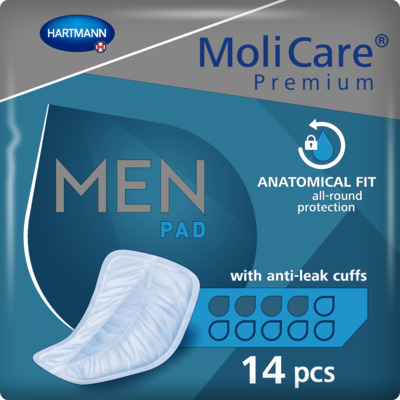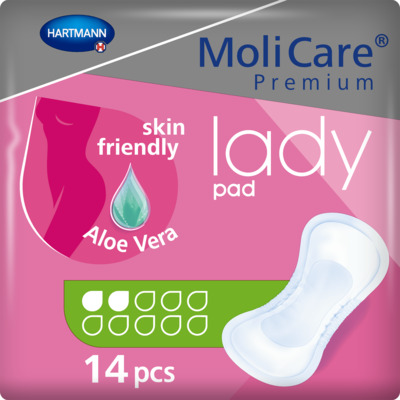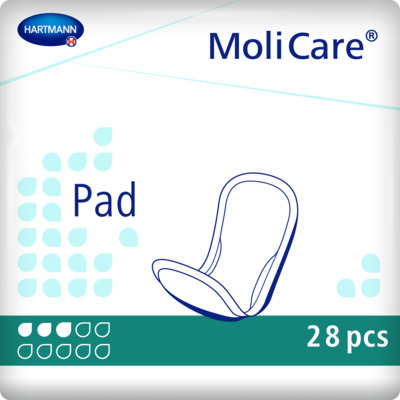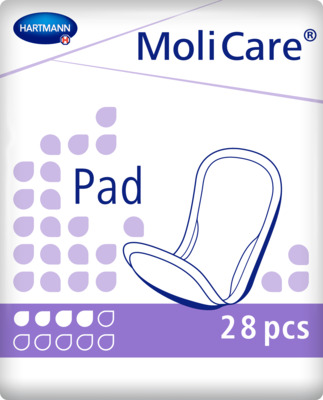Incontinence Advice
Urge Incontinence In Women: Treatment Methods
Urge incontinence affects countless women, impacting their daily lives with sudden and uncontrollable urges to urinate. Learn how to treat this condition today. This condition, often stemming from a variety of causes such as bladder infections or nerve damage, can significantly disrupt normal activities. In this article, we'll explore effective treatments for urge incontinence, focusing on tailored approaches for women. From behavioural modifications and medication to advanced medical interventions, we aim to provide valuable insights and practical solutions to manage and potentially alleviate urge incontinence.

Types of urge incontinence
There are normally two forms of urgency incontinence: urinary urge incontinence and bowel urge incontinence. Let’s look at each of these in detail so you can understand to a greater extent about what is urge incontinence, and which form you have in order to get accurate treatment.
Urinary urge incontinence
This type of incontinence is primarily associated with overactive bladder syndrome, where there is an uncontrollable spasm of the bladder muscles. This spasmodic action often leads to a pressing need to urinate, even when the bladder may not be full. Women experiencing urinary urge incontinence may find it challenging to delay urination long enough to reach a toilet or restroom, leading to frequent leaks.
Bowel urge incontinence
Unlike urinary incontinence, bowel urge incontinence involves the loss of control over bowel movements. It often results from a weakening of the pelvic floor muscles or damage to the nerves controlling the anal sphincters. Common causes include childbirth, neurological damage from conditions like multiple sclerosis or stroke, and chronic diseases like diabetes.
Symptoms of urge incontinence
Understanding the symptoms of urge incontinence is crucial for female urinary incontinence treatment. The condition can vary from person to person, but some common indicators include:
- Sudden urge to urinate: A compelling need to urinate that is difficult to control, often resulting in involuntary leakage.
-
Frequent urination: Needing to use the bathroom numerous times during the day and night, which can disrupt daily activities and sleep patterns.
- Incomplete bladder emptying: After urinating, there may be a sensation that the bladder isn’t fully empty, a condition that can lead to discomfort and further complications.
These symptoms can also extend to bowel urge incontinence, characterised by an urgent need to defecate accompanied by involuntary loss of faeces. Understanding these signs is the first step towards seeking effective urge incontinence treatment.
Lifestyle
Lifestyle changes can be a major factor to aid in preventing urge incontinence, helping to minimise the occurrence of symptoms. Lifestyle adjustments include:
- Maintain a healthy weight: Excess weight can increase pressure on the bladder and pelvic floor muscles, exacerbating incontinence.
-
Dietary adjustments: Avoid irritants like caffeine, alcohol, and other acidic foods and drinks that irritate the bladder and bowels.
- Routine bathroom visits: Establishing a schedule for urination can help train the bladder and prevent urgency.
When to seek medical advice for urge incontinence
Urge incontinence is not only a widespread problem but also highly treatable. However, statistics reveal that it takes an average of 6.5 years for women to receive a proper diagnosis for urinary incontinence. This delay can lead to unnecessary suffering and a decreased quality of life.
Consulting a healthcare professional
If you exhibit any symptoms of urgency incontinence, it is imperative to consult a healthcare provider as soon as possible. These symptoms might indicate underlying conditions such as bladder infections, inflammation, obstructions, or even kidney or bladder stones.
Primary care physicians play a critical role in the diagnostic process, conducting thorough medical histories and examinations. They can also refer patients to specialists for more complex cases, ensuring a thorough assessment and tailored treatment plan. Regular follow-ups allow for adjustments in treatment based on the patient’s progress.
Urge incontinence treatment
Understanding how to manage urge incontinence effectively involves a blend of behavioural modifications, medical interventions, and, in certain cases, surgical procedures. This tailored approach ensures that treatment is adaptable to the specific needs and conditions of each individual.
Behavioural treatments
Behavioural techniques are often the first line of defence in managing urge incontinence. These non-invasive strategies are beneficial in teaching patients how to control their bladder and bowel movements more effectively:
Bladder training: This involves extending the time between trips to the bathroom. Starting with small intervals, such as every hour, and gradually increasing the duration can significantly help train the bladder to hold urine longer, reducing the frequency of urge incontinence episodes.
Timed voiding: By keeping a diary of urination and leakage, individuals can begin to notice patterns and plan trips to the bathroom to prevent accidents, thereby gaining better control over incontinence.
Pelvic floor exercises: Also known as Kegel exercises, these involve tightening and relaxing the muscles that control urine flow. Regular practice strengthens the pelvic floor, which supports the bladder and reduces the symptoms of urge incontinence.
Medicinal interventions
When behavioural methods are insufficient, medications may be prescribed to alleviate the symptoms instead:
Antimuscarinics: These medications, such as oxybutynin, tolterodine, and darifenacin, relax the bladder, reduce urinary frequency, and prevent involuntary contractions. They are typically started at a low dose to minimise side effects, with adjustments made based on effectiveness and tolerance.
Mirabegron: This alternative medication is used when antimuscarinics are not suitable or cause adverse effects. Mirabegron works by relaxing the bladder muscle, thus increasing bladder capacity and decreasing the instances of leakage.
Advanced treatments
In cases where medication and behavioural therapies do not yield satisfactory results, more invasive options may be considered:
Biofeedback: Utilising sensors that monitor the bodily functions, biofeedback helps patients gain better control over their pelvic muscles and bladder.
Botulinum toxin A injections: Commonly known as Botox, these injections can increase the bladder's storage capacity and reduce episodes of leakage.
Hormone therapies: Particularly for women, using hormones like oestrogen alone or in combination with progesterone can help manage symptoms.
Sacral nerve stimulation: This involves sending a mild electrical signal to the nerves that influence bladder control, helping reduce abnormal bladder contractions.
Surgical options: Surgery is considered only after all other treatments have been explored. It is reserved for severe cases or when structural abnormalities cause the symptoms.
In complex cases of urge incontinence, where diagnosis remains uncertain or treatments have not yielded expected improvements, doctors may recommend further diagnostic assessments. Such scenarios include:
Unresolved diagnostic questions: When initial tests don't provide clear results or when symptoms are atypical.
Treatment resistance: If standard treatments fail or symptoms persist despite treatment efforts.
Pre-surgical evaluation: Before considering surgical options, to ensure all other possibilities have been exhausted.
Complicated medical history: Presence of other conditions like recurring infections or neurological issues that might influence incontinence.
Types of Diagnostic Tests
Urodynamic studies: These are critical for understanding how well the bladder and urethra are functioning. They help identify involuntary bladder contractions, bladder storage pressures, and urethral function which are vital in diagnosing urgency incontinence.
Cystometrogram: Measures how the bladder behaves when it fills with fluid, noting any involuntary contractions or sensations of urgency.
Stress testing: Simulates conditions that might cause urine leakage, such as coughing or sudden movements, to observe bladder stability.
Urethral pressure profile: Assesses the strength and function of the urethra, which is crucial for maintaining continence.
Uroflowmetry: Gauges the flow and force of urination, providing insights into potential obstructions or weaknesses.
Cystoscopy: This procedure allows doctors to look directly inside the bladder and urethra, identifying any structural abnormalities, stones, or unusual growths.
Imaging tests: To visualise the urinary tract's structure and to detect anomalies that might not be apparent with other tests.
Intravenous pyelogram (IVP): A dye is injected into the bloodstream, and X-rays are taken to track the dye's flow through the urinary tract.
CT scan: Offers a detailed cross-sectional view of the abdominal and pelvic area, helping to identify stones, tumours, or other abnormalities.
Ultrasound: Uses sound waves to create images of the urinary tract, useful for detecting masses, kidney stones, or other changes in the kidneys and bladder.

Incontinence Product Finder
Selecting the right products is key in ensuring security and discretion. If you’re not quite sure what you need, try our product finder. It’ll ask you a few questions about your needs and then provide a list of recommended products that may help you.
Find Product Incontinence Product FinderHow we support women with urge incontinence
At HARTMANN Direct, we understand the challenges faced by women dealing with incontinence. That's why our female incontinence products are designed to provide comfort, discretion, and maximum protection. From highly absorbent incontinence pads to user-friendly design, we ensure that managing incontinence is as stress-free as possible. While not a cure for urge incontinence, incontinence products are essential for managing symptoms effectively and maintaining a healthy lifestyle, particularly for over 50s.
Alternatively, you can try these solutions:
Handheld urinals and catheters: These provide practical solutions for managing incontinence when access to a restroom may not be immediate.
Skin care products: Wash lotions, cleansing foams, and tissues help keep the skin clean and prevent irritation due to frequent exposure to moisture - try out these products from our skin care range for the best protection:
Be sure to read these articles for further information regarding urgency incontinence treatment:

FAQs
Can you reverse urge incontinence?
While urge incontinence can often be effectively managed and symptoms significantly reduced, it is not always completely reversible. Treatment success varies based on individual conditions, underlying causes, and adherence to prescribed therapies.
Can female incontinence be cured?
Female incontinence can often be effectively managed and sometimes cured, depending on the type and cause. Treatments such as pelvic floor exercises, lifestyle changes, medications, and surgical options have proven successful in many cases. However, the possibility of a cure varies by individual circumstances.
Sources
Singh, A., (2023) Antimuscarinics: What Are They, How Do They Work, What Are They Used For, Side Effects, and More. Osmosis. [online] Available at: https://www.osmosis.org/answers/antimuscarinics [accessed 12/06/24]
NHS. (2023) About Mirabegron. [online] Available at: https://www.nhs.uk/medicines/mirabegron/about-mirabegron/ [accessed 12/06/24]
Cancer Research. (2022) IVU (Intravenous urogram) or IVP (Intravenous pyelogram). [online] Available at: https://www.cancerresearchuk.org/about-cancer/tests-and-scans/ivu-or-ivp [accessed 12/06/24]

MoliCare® Premium Men Pad 4 Drops
<h2>Comfortable and absorbent</h2> <p>Why MoliCare for men? Hers are some of the key features of the MoliCare® Premium Men Pads from Hartmann:</p> <ul> <li>Discreet and comfortable</li> <li>Fits the male physique</li> <li>3-layer absorbent core</li> <li>Fast-absorbing system</li> <li>Anti-leakage cuffs</li> <li>Odour neutralisers</li> <li>Wide adhesive strip</li> <li>Skin-friendly</li> </ul> <p>With an affordable price and great quality guarantee, you cannot regret choosing MoliCare® Premium Men Pad 4 drops, equipped with anti-leak cuffs, and 14 pieces per bag.</p> <h2>Slim and discreet under clothing</h2> <p>MoliCare® Premium MEN Pads offer reliable support for men dealing with bladder weakness. Whether it's stress incontinence or urge incontinence, these pads for men are designed to provide a discreet and quick solution on the go. Simply place the pad before applying your underwear and secure it with the adhesive strip for worry-free protection. MoliCare® Premium MEN Pads offer full coverage for men facing very light to moderate bladder weakness.</p> <h2>Leakage protection for men</h2> <p>MoliCare® understands that each individual's incontinence needs are unique. That's why our incontinence products, including MoliCare® Premium MEN Pads, are available in different absorbency levels. You can find the perfect fit and protection for your specific requirements.</p> <h2>Reliable and soft on the skin</h2> <p>Our body-shaped absorbent pads are designed to deliver dependable and skin-friendly incontinence protection every day. Experience discreet comfort with the soft, cotton-like materials and the added benefit of an odour neutraliser, ensuring you feel fresh and confident throughout the day.</p> <h2>Fast delivery to your home</h2> <p>At HARTMANN Direct, we ensure a fast delivery service for all our products. Enjoy free delivery on orders over £50, making it convenient and hassle-free to receive the incontinence products you need. Our dedicated customer care team is here to discuss your incontinence product needs and answer any questions you may have. Call us today on 0800 028 9470 to experience the comfort and confidence that MoliCare® Premium MEN Pads can provide.</p>
MoliCare® Premium Lady Pad 2 Drops
<h2>Skin Friendly Pant Liners</h2> <p>For women that experience slight incontinence and bladder weakness, across different age groups, it can be a challenge to find the right bladder weakness product that is easy to apply and wear without the worry of potential leakages. Fortunately, we understand this approach, hence why we are happy to offer our MoliCare® Premium Lady Pad 2 drops, that is skin-friendly, Aloe Vera applied, and comes with 14 liners per bag.</p> <h2>Slim and discreet liners</h2> <p>Whether dealing with stress incontinence or urge incontinence, these panty liners offer a discreet and easy solution on the go. Simply place the pad in your underwear and secure it with the adhesive strip for all-round protection. Available in different absorbency levels, MoliCare® bladder weakness products cater to all levels of bladder weakness, ensuring secure care.</p> <h2>Control Bladder Weakness</h2> <p>Enjoy the benefits of these body-shaped absorbent panty liners, designed for women with bladder weakness. The pads offer discreet, reliable protection with features including odour control and fast absorption.</p> <p>With a wide adhesive strip, you can comfortably fix the pad in your regular underwear, providing secure and comfortable fixation. The pads are skin-friendly, featuring soft, breathable materials, including foam cuffs, and a top sheet treated with Aloe Vera.</p> <p>Keeping your skin healthy is a priority, which is why MoliCare® Premium Lady Pads have a skin-neutral pH value of 5.5 and an antibacterial finish. They are also dermatologically tested, offering peace of mind.</p> <h2>Buy pant liners online</h2> <p>Never worry about running out with our convenient order service and fast delivery direct to your door. Enjoy free shipping on orders over £50.</p> <p>If you need assistance, our professional customer service team is here to support you in choosing the right product. Reach out to us today at 0800 028 9470 and experience the comfort and reliability of MoliCare® Premium Lady Pads.</p>
MoliCare Pad 3 Drops
<h2>Incontinence pads for men and women</h2> <p>Protect yourself against slight bladder weakness with the MoliCare® Pad 3 drops. Suitable for men and women, offering an ideal solution to regain control and live your active life without interruptions. Slimline, discreet, and contoured to fit your body, these incontinence pads ensure a comfortable and barely noticeable feel, providing exceptional dryness and protection for slight incontinence.</p> <p>Crafted with soft, skin-friendly fabric and a polyester backsheet, these incontinence pads ensure you can confidently go about your day, secure against minor leaks. The wide adhesive fixing strip keeps the pad securely in place, while the super absorbent core wicks moisture away from your skin. The elastic anti-leak edging adds an extra layer of reassurance, and odour neutraliser keeps you feeling fresh and confident. With the MoliCare® Pad 3 drops, you no longer need to let slight or occasional incontinence hold you back from enjoying life to the fullest. Simply adhere the pad to your underwear, and you will barely feel the difference.</p> <h2>Price match promise</h2> <p>Experience convenience with our fast delivery service, bringing your chosen products directly to your door. At HARTMANN Direct, we offer a price match promise and free delivery for orders over £50, making sure you receive both quality and value.</p> <p>If you need further assistance, our customer care team is here to help. Give us a call today at 0800 028 9470, and we'll find the perfect incontinence product tailored to your needs. Take charge of your life with the reliable and comfortable protection of MoliCare® Pad 3 drops. Say goodbye to worries and hello to an active and confident lifestyle.</p>
